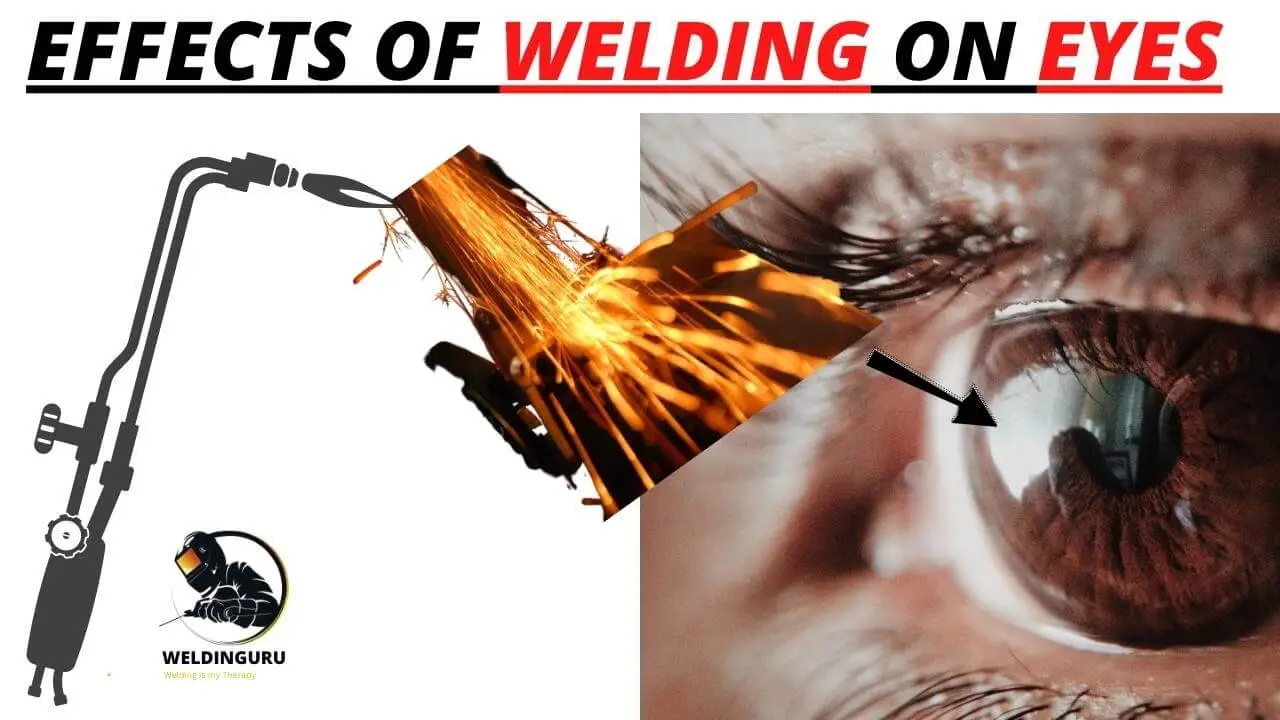Welding is a trade where the welder has to deal with dangerous conditions, and not wearing protective eye gear can lead to serious eye injuries. In this article, I will discuss the effects of welding on the eyes.
Due to the potential severity of the consequences, welders must be adequately trained, and precautions should be taken to make the workplace safer for them.
Whenever you are welding, it’s a good idea to wear protection glasses to avoid any close encounter with molten metal.
However, if you’ve already had an accident in which your eyes came into direct contact with the molten metal, then you should go in for treatment immediately. Ignorance about the effects of welding can actually cost you your sight!
Effects Of Welding On Eyes
Welding sparks can be dangerous to the eyes if they get too close to the eyes. If a spark lands on your eye, it could cause injury or even blindness. The best way to avoid getting injured while welding is to wear protective gear such as goggles and face shields.
The goggles should be made of glass or plastic that has been treated with special coatings to stop sparks from coming through.
The face shield should be made from metal and have a dark-colored lens so that you can see clearly while welding but will not be blinded by the bright light from the sparks.
In the remaining article, we will discuss the welding consequences on the eyes in accordance with different perspectives so keep reading.
How Many Types of Radiations are Linked with Welding?
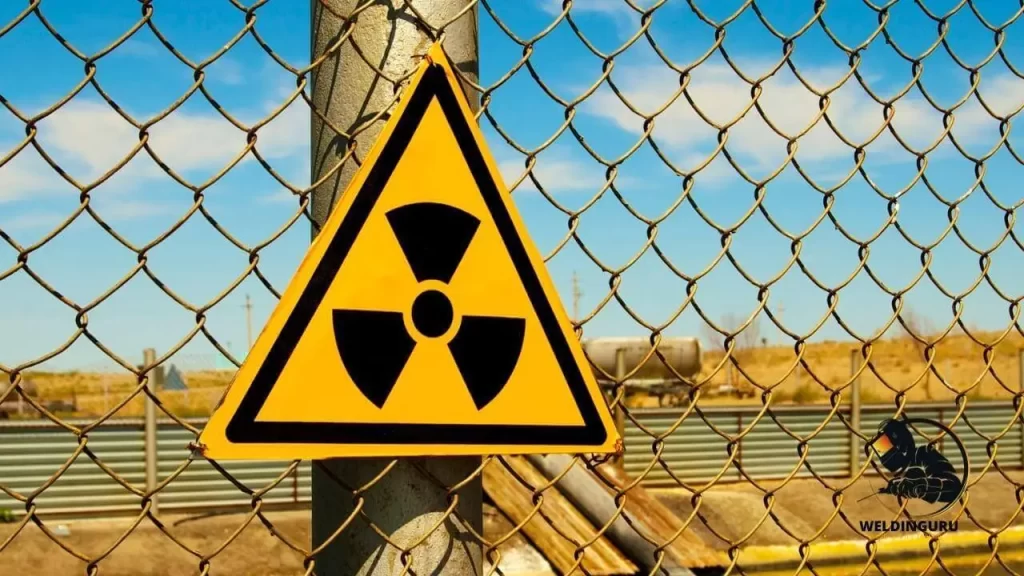
There are many different types of radiation that are linked with welding. Welding is a process that involves the joining of two or more pieces of metal by means of heat and pressure to form a single piece.
The high temperatures involved in the welding process can create dangerous levels of radiation.
Ultraviolet Light:
The most common type of radiation associated with welding is ultraviolet light, which can cause damage to both eyesight and skin.
Ultraviolet light can also lead to cancer, so it is important to protect yourself from this type of radiation when you are working as a welder. These are at 200 to 400 nanometers.
It divides into three major categories:
- UVA (314 to 400 nanometers)
- UVB (281 to 314 nanometers)
- UVC (101 to 280 nanometers)
UVB & UVC rays are liked to be absorbed in the eye cornea, whereas UVA rays are passed through the cornea and absorbed by the retinal eye lens.
Infrared Light:
Another type of radiation linked with welding is infrared light, which causes damage to the eyesight and skin as well as causes potential health problems over time.
Infrared light can also cause heat fatigue and even burns if you are not careful when working around it. These are at 700 to 1400 nanometers.
X-Rays:
X-rays are another type of radiation that can be linked with welding, but they do not occur at all times during the process because they require special equipment to create them.
These x-rays can be very harmful if they are not properly filtered out before being used on human subjects.
Does Welding Hurt or Damage your Eyes?
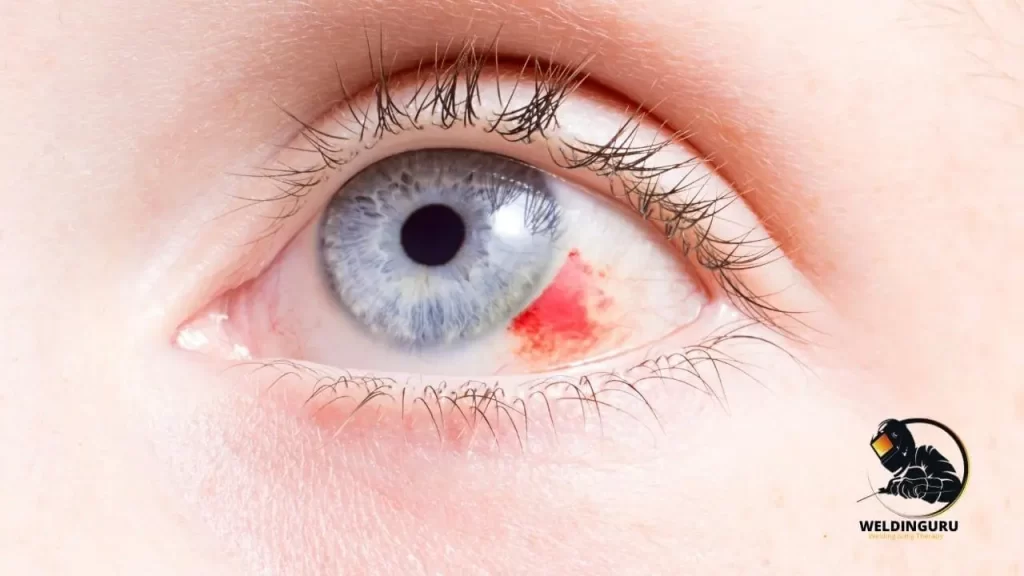
Welding does not generally cause eye damage if you follow safety precautions. While welding, you may experience temporary or permanent vision loss if you are not wearing the proper eye protection.
If you do not wear protective eyewear, you risk exposing your eyes to harmful ultraviolet (UV) light and infrared (IR) light emitted by the torch flame.
UV light can damage the cornea, which is the clear lens covering the front of your eye. The IR light can damage the retina, which is responsible for sending images to your brain via nerve cells. Welding sparks and slag may also cause eye injury by burning or scratching your corneas and retinas.
If you wear protective goggles over your eyes during welding, you will be protected from most of these hazards and risks of vision loss.
However, if your goggles are damaged or defective in some way, for example, if they have a scratch on them, you could still be at risk of developing a serious eye injury if you don’t wear another type of protective eyewear instead!
What do you mean by Arc Eye?
Arc eye is a condition that affects the cornea, which is the clear front part of the eye. The cornea is usually smooth and clear, but when it gets damaged, it can develop tiny cracks and abrasions. These small injuries make it difficult to see clearly, which can be very frustrating.
Arc eye is caused by exposure to ultraviolet (UV) light, which burns your cornea and causes inflammation.
The symptoms of arc eye include:
- Redness
- Burning sensation in the eyes
- Watery eyes
- Blurred vision
Why Can’t you Look at Welding?
The reason you can’t look at welding is that the light from the welding arc is so bright it will temporarily blind you. The light is so intense that it can cause permanent damage to your eyes.
The reason you can’t look at welding is because of the intense heat produced by the arc. The light produced by a welding arc is so bright that it can cause temporary blindness and permanent retinal damage.
But it’s not just the intensity of the light that causes this damage. It’s also caused by heat generated by an arc welder’s power source.
Welding Eye Injury Types
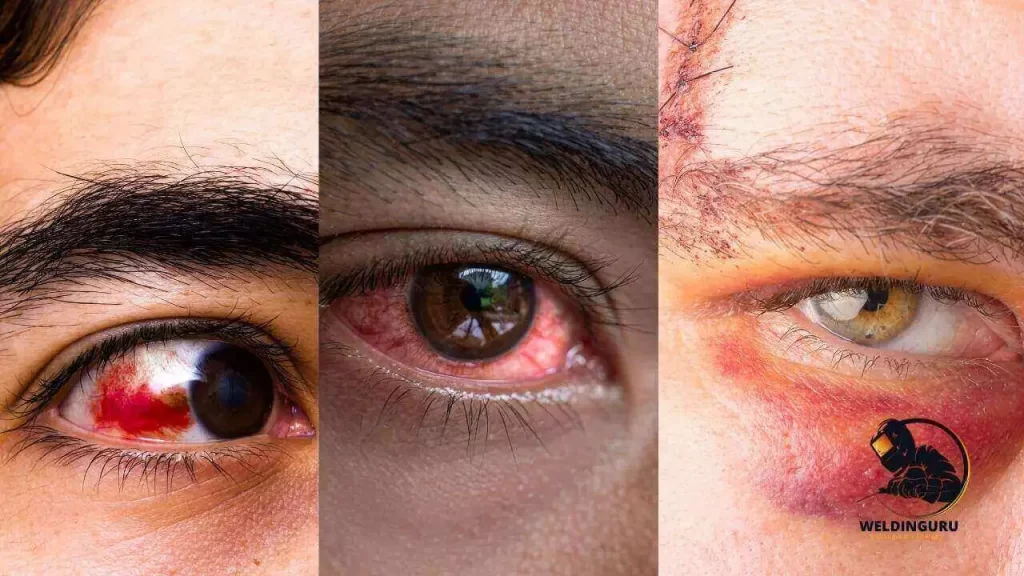
Welding eye injuries are common and can be very serious. There are several different types of welding eye injuries that you need to know about, including:
- Welder’s flash
- Solar retinopathy
- Corneal burns
- Keratitis
1. Welder’s Flash:
Welders are at risk of developing welder’s flash, which is a sunburn-like condition of the retina caused by ultraviolet light.
This occurs when an arc flash occurs around the weld area, causing damage to the eye’s sensitive tissue. It can cause temporary or permanent blindness in some cases.
2. Solar Retinopathy:
Solar retinopathy is a long-term eye condition that occurs when ultraviolet light from welding torches causes damage to retinal tissue.
The symptoms include blurred vision, floaters (tiny specks that appear to be moving across your field of vision), and spots in your field of vision.
3. Corneal Burns:
A corneal burn is an abrasion, or scraping, of the cornea. It can be caused by contact with a hot surface, such as a welding arc or sparks.
Abrasions should be treated immediately to prevent infection, and if possible, protective eyewear should be worn to prevent further injury.
4. Keratitis:
Keratitis is an inflammation of the cornea, which can result in blurred vision or sensitivity to light. Keratitis may be caused by exposure to chemicals, dust particles, or even extreme temperatures.
The best way to treat keratitis is by using antibiotic drops until symptoms subside.
How to See Better when Welding?
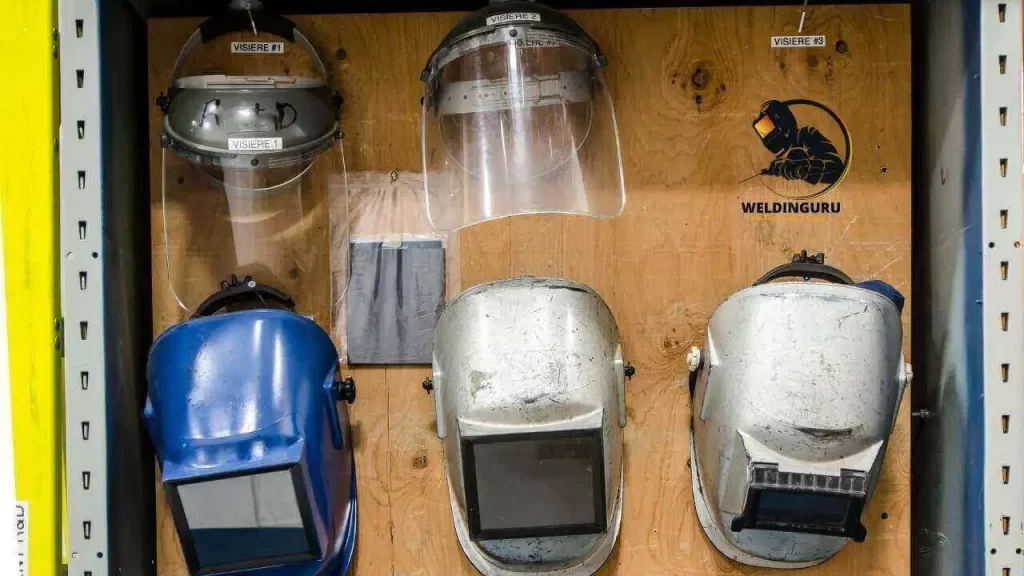
Welding is a complex and difficult process, but it’s also an essential skill for many trades. Welding requires you to focus on the work at hand and not let outside distractions get in your way.
However, when you’re working with hot metal, it can be hard to see what you’re doing clearly. Here are some tips for welding better:
- Get a pair of safety glasses designed specifically for welding. These glasses have lenses that protect your eyes from harmful UV rays emitted by molten metal, as well as from sparks that fly off the weld.
- Get a helmet with a face shield that covers both sides of your face so that you don’t have to worry about stray sparks landing on exposed skin or hair.
- Use a magnifying lens if necessary to increase your ability to focus on small details in the welded area.
- Make sure your work is well-lit so you can see the welding area clearly.
- Take breaks! Don’t try to weld for hours on end without ever stopping; give yourself time for rest in between tasks so that your eyes can recover from being exposed over time.
Does Welding Create Skin Hazards?
The most common hazard associated with welding is burned injury caused by flying sparks or hot metal fragments. In order to avoid such injuries, welders should wear protective clothing when welding outdoors or in areas where there is no protection from sparks.
Protective clothing should include long pants, long sleeves, gloves, and goggles or face shields made of glass or plastic. Welders should also wear helmets with visors and boots with steel toes for added protection against falling objects and molten metal splashback from the workpiece being welded.
Welding skin hazards can also occur if you don’t follow proper precautions when using certain types of equipment during your job duties (e.g., grinding wheels).
This can result in injuries like chemical burns caused by exposure to chemicals found in compounds like grinding dust that is created when grinding wheels are used during production processes.
Reasons for Welding Effects on Eyes
Welding is done by a lot of people all around the world. It is a very important job, and it helps people to earn a living. But there are several reasons why you need to take care of your eyes when you are working in a welding shop.
First, the heat from the torches used for welding can cause eye problems. The heat from these torches can cause permanent damage to your eyesight if you do not protect them properly.
Second, the chemicals used in welding can also cause damage to your eyes. These chemicals include acids and other chemicals which may be harmful if they come into contact with your eyes.
Third, there is always a risk of flying particles when you are working with metal sheets. These particles can get into your eyes and cause damage as well.
So it is important for all welders to take proper precautions when working with metal sheets so that they do not suffer any damage to their eyesight because of this dangerous activity!
What to do If your Eyes Get Hurt while Welding?
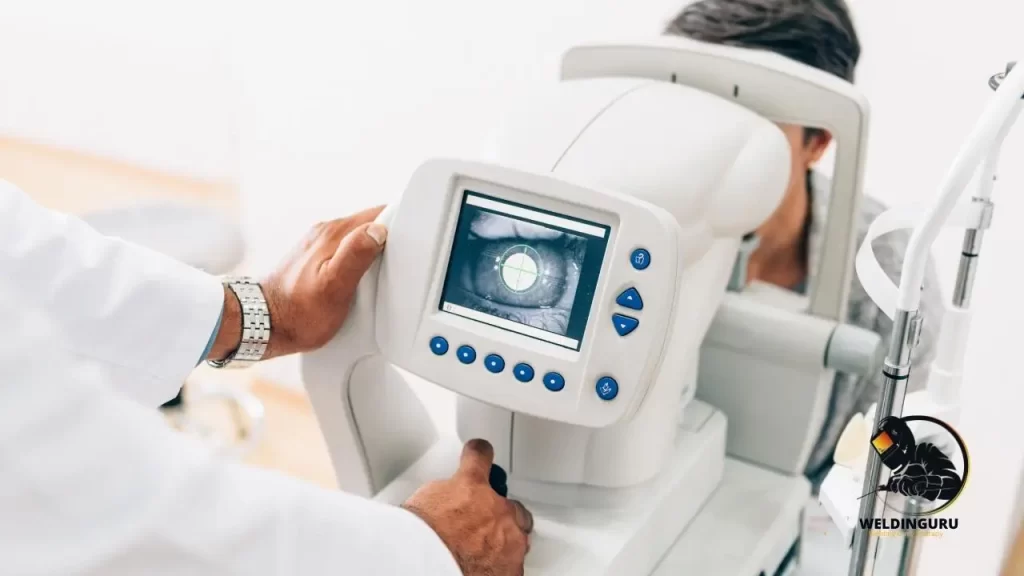
If your eyes get hurt while welding, there are some steps that you can take to make sure that they heal properly.
First and foremost, if you have been exposed to an intense light source or high heat for a prolonged period of time, it is important that you seek medical attention immediately. This can be done by going to an urgent care clinic or hospital.
Your doctor will examine your eyes and determine whether or not any damage has been done. If there has been any damage, then they may refer you to an ophthalmologist who specializes in treating eye injuries.
The ophthalmologist will determine whether or not surgery is necessary based on what kind of injury was caused by exposure to heat or light.
If any such situation happens, I personally advise you to stop your welding project and seek medical attention as soon as possible.
Welder’s Arc Eye Treatment Home Remedies
Welders’ Arc Eye is a condition that affects welders who are exposed to ultraviolet light from the arc of the welding process. The eye condition can be caused by the lack of protection from welding goggles or welding helmets.
Fortunately, there are many home remedies that you can use to treat Welder’s Arc Eye. Here are some of them:
1. Tea Bags:
Tea bags have been used as an effective way to treat Welder’s Arc Eye for centuries. The tannic acid found in tea leaves helps reduce inflammation, which is one of the leading causes of pain associated with this condition.
To use tea bags as a treatment, steep one bag in hot water and place it over your eye for 15 minutes at least twice a day until symptoms disappear.
2. Onion Juice:
Onion juice has also been used as an effective way to treat this condition for centuries because it contains sulfur compounds that help relieve redness and swelling around your eyes caused by exposure to light during welding or other types of work involving intense illumination from different types of equipment such as welding torches or flashlights.
3. Ice Packs:
Ice packs can help reduce swelling and inflammation associated with welder’s arc eye injuries. They should be placed directly on the affected area every few hours until your symptoms subside or until they’re no longer needed.
4. Cucumber:
Cucumbers contain a lot of vitamin A, which is important for healthy eyes. They also contain antioxidants that help relieve redness and swelling in your eyes.
To use this remedy, cut the cucumber in half lengthwise, then place one half on each eye for 10 minutes at a time. Do this three times per day until your symptoms subside.
5. Almond Oil:
Almond oil has anti-inflammatory properties that can help reduce redness and irritation after an arc flash incident. Apply almond oil to the area around your eye with a cotton ball for 20 minutes every two hours as needed.
Precautionary Tips to Avoid Eyes Injuries
Welding can be dangerous, especially if you’re not using the proper equipment. The most common eye injury while welding is a burnt cornea and other eye injuries. To avoid this, here are some tips:
- Make sure to wear protective glasses.
- Wear light clothing, as dark colors will absorb more heat than light colors when you weld.
- Wear a welding helmet that has a shade number of 10 or higher, which will protect you from harmful ultraviolet (UV) rays and infrared radiation from the arc of the welder beam.
- If possible, use a mask with side shields attached so that no sparks can get behind them where they could cause damage to unprotected skin or eyes.
- Keep your face away from the weld: Sparks can fly out of the puddle as you’re welding and land on your face, causing serious burns or even blindness if they come into contact with your eyes.
Also See: How to Weld Titanium?
Estimated Safe Distance from Welder’s Flash Arc
The estimated safe distance from the flash arc of a welder is between 8 and 9 inches. The closer you are, the more likely you are to be exposed to the light and heat generated by the arc.
The amount of exposure will depend on how close you are to the arc, as well as which type of gas shield or gas lens is being used.
Final Words!
When it comes to welding, safety goggles and welders’ helmets are the protectors of the eyes and save you from any effects of welding on the eyes.
These safety gears are meant to guard the wearer’s eyes against the extreme heat, sparks, and blinding flashes of light created by welding.
The intense light emitters are a result of the intense heat generated by flames or electricity when two pieces of metal are drawn together under pressure.
FAQs:
Does welding mess up your eyes?
Welding can have an effect on the eyes in a variety of ways, with different types of welding causing different risks. Because welding involves bright light and intense heat, welding regularly over time can cause exposure to harmful UV radiation. Poor ventilation can also cause some metals to emit fumes that may be irritating to the respiratory tract, and if you’re not wearing proper safety equipment, this could also affect your eyes.
What problems can reflected welding light cause?
Reflected light from a welding arc can cause injury to the eyes and skin. It is important to wear appropriate eye protection, such as a face shield or goggles, when using a welder.
Is eye damage from welding permanent?
Ocular damage from welding fumes is caused by intense light that produces a photochemical reaction in the eye. It can lead to macular degeneration and cataracts, as well as retinal damage. As with most forms of vision loss, vision will be weakened and blurred but not completely lost.
